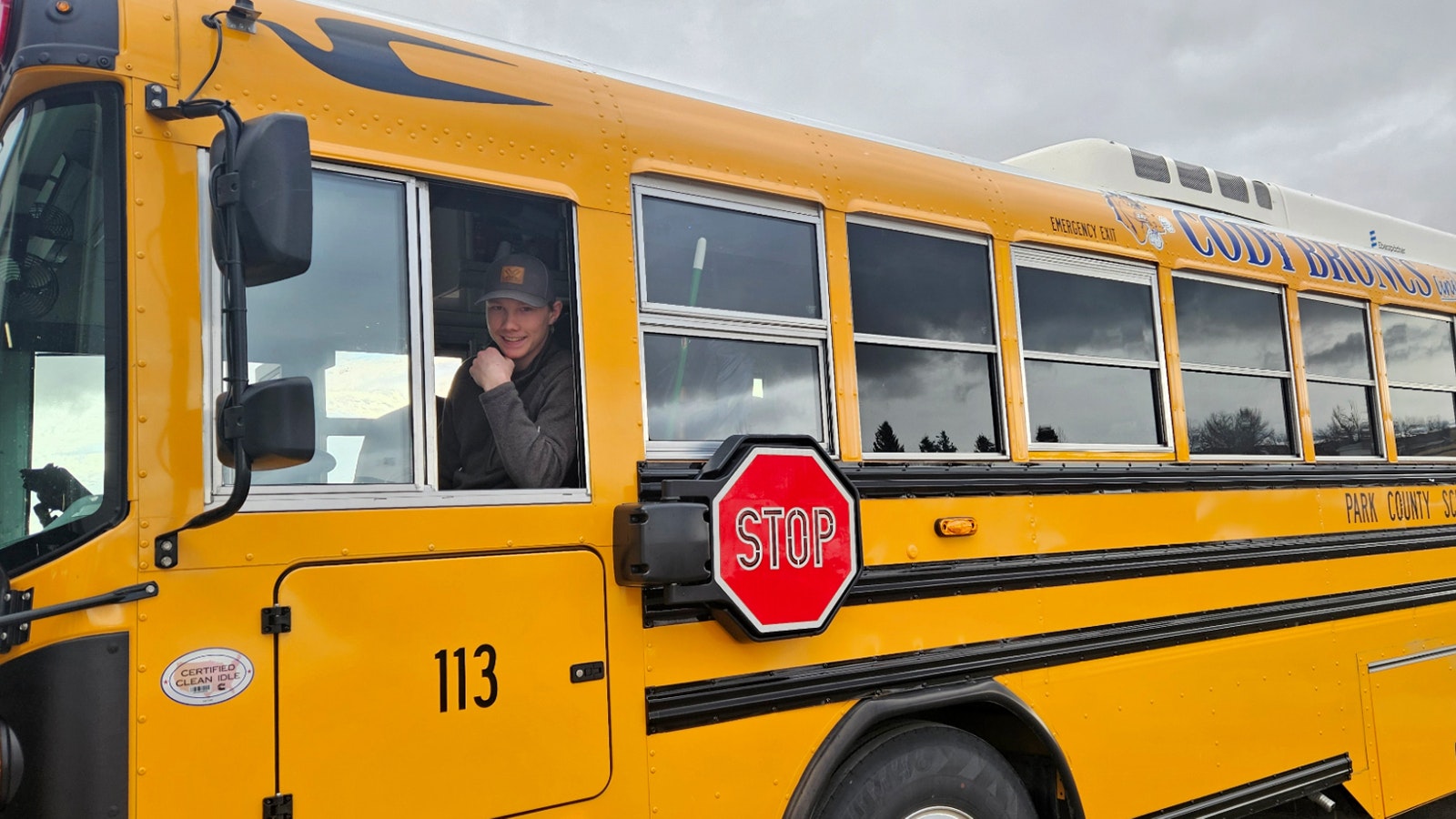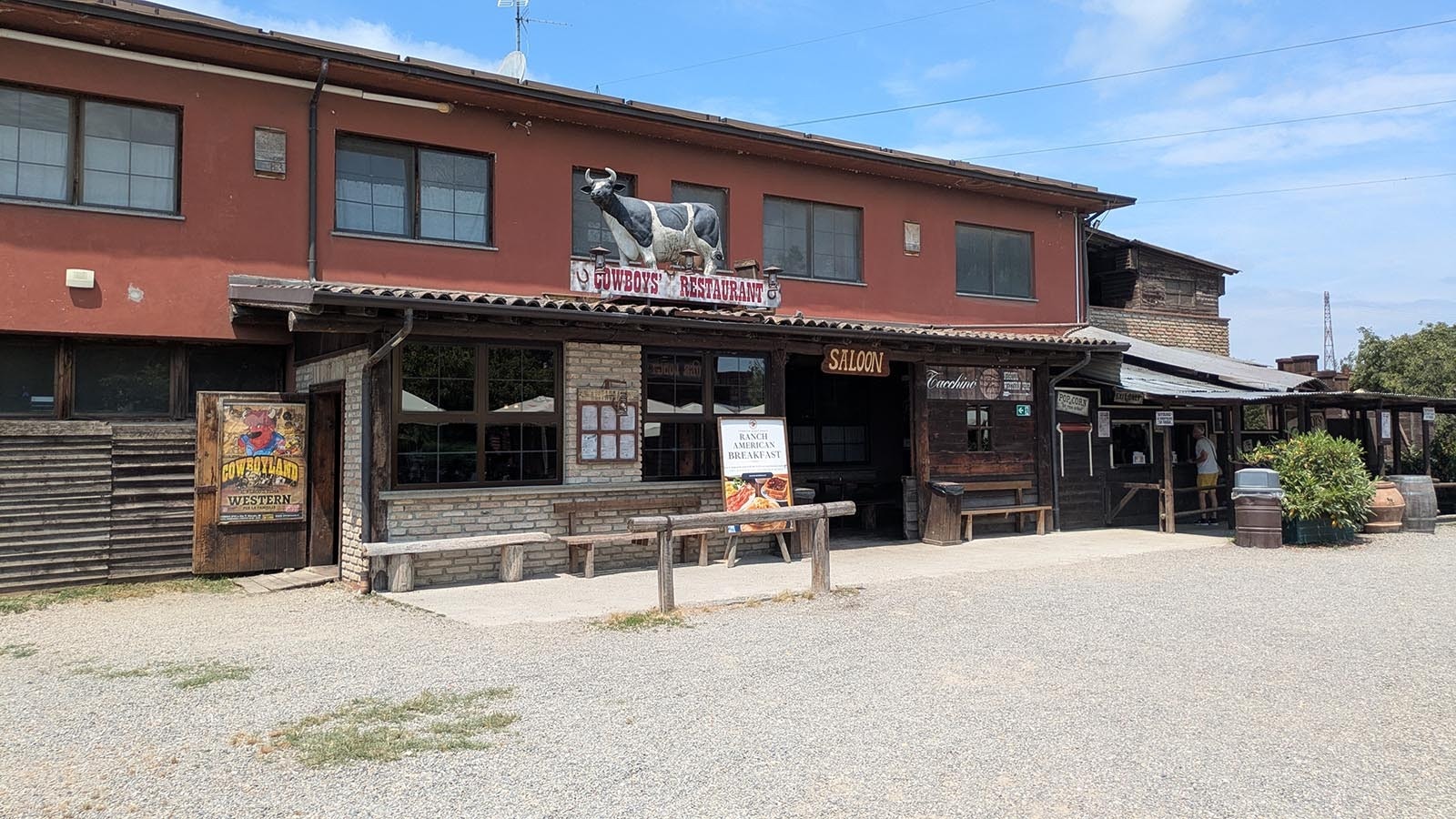Many of the artifacts at Medicine Lodge were first uncovered accidently by a rancher with the help of a bulldozer.
State Archaeologist George Frison wrote in “Medicine Lodge Creek,” his book that he co-authored with Danny Walker, that he had known of these ancient drawings at the historical site nearly 100 miles west of Buffalo since the 1940s. Back then, it was a working ranch, and he had been granted permission from ranch owner Sadie Taylor to explore the site whenever he wished. But he never followed up on her offer until the late 1960s. That was when a treasure trove of indigenous artifacts were uncovered while constructing corrals.
In 1967, Taylor’s stepson, ranch manager and local veterinarian, Dr. Orval E. Bunnell, had decided to rebuild fences, add cattle pens, loading chutes, and special feed lots in front of the sandstone cliff that had been used for many decades as an open corral and winter feed ground for range cattle.
“Dr. Burnell’s first step in this direction,” Frison wrote, “was to obtain a bulldozer and attempt to level the area in front of the cliff. This revealed numerous buried stone artifacts, first noticed by (archaeologist) Stuart Conner who happened to be visiting the site at the time to see and record the rock art.”
The next few years, Frison and his associates tested and studied the area, and along with the 2,000-year-old rock art discovered artifacts such as rock cobbles, arrowheads, awls and beads, some that dated back 10,000 years. This was the research project Frison had been looking for and he received additional funding to continue their studies of the area.
“Dr. Burnell was very reasonable and cooperated in every way possible during our early site work,” Frison wrote, “although we were a disruptive element for his daily operations.”
By 1973, the Wyoming Game and Fish Department purchased the Taylor Ranch and created the 12,000-acre Medicine Lodge Wildlife Habitat Management Area. The archaeology work continued, and within a short time, about 100 acres were set aside as the Medicine Lodge State Archaeological Site with the rock cliffside of ancient art as the centerpiece.
Medicine Lodge State Archaeological Site
Shield carrying warriors and animals dance across the face of the rock bluff, their stories lost to time but their ghostly images leaving behind clues of the people that once inhabited the region. These carved petroglyphs and painted pictographs cover the face of a 750-foot-long sandstone bluff, which for years has sheltered the area from wind. Many of the same plants and wildlife that had once sustained the hunters and gatherers 10 centuries before still flourish in the Medicine Lodge site, attracting a new generation of visitors.
Interpretive signs along the base of the bluff guide visitors through the history of the Medicine Lodge site and the surrounding region. The other attractions are the trout fishing, wildlife viewing, off-road vehicle trails and camping in the foothills of the Bighorn Mountains.
“It has great habitat for humans, for plants and animals and everything needed to sustain life,” Wyoming State Park Region District Manager Brooks Jordan told Cowboy State Daily. “We see upwards of 50,000 visitors a year. It's just such a great place to come and pursue diverse recreational interests, or even just to come and relax or spend time learning about history and culture.”
The original barn on the 1800s homestead was renovated into a visitors center and exhibit. It overlooks the fields and the picnic tables scattered strategically about. The Medicine Lodge Creek meanders through the area, alive with fish. Campers park their rigs beneath the rock bluffs and erect their tents beside the creek and cottonwoods in designated spots. The day use area is open for picnics and gatherings. Birds and chipmunks flit about and the occasional snake sunbathes on a rock.
Walking beneath the red bluffs and studying the petroglyphs were Abby Lapides and Samuel McInturf of St. Louis, who were vacationing in Wyoming for the first time. They said they were drawn to the area because of the ancient history.
“It's really neat just seeing an ancient form of art,” Lapides said. “I think it is really fascinating, that humans have been wanting to put their mark on the world in some way forever. It's not a modern thing, it's just part of human nature.”
The Ancient People
The newest addition to Medicine Lodge is an exhibit that Jordan calls more of an experience. The display showcases the people that once lived in the area and interprets what life may have been like. As visitors begin the journey, Jordan tells them, “You are about to be transported through 10,000 years of time, seasons and cultures.”
A recording of a native guide leads you through a labyrinth of rooms as you discover the history of Medicine Lodge. The focus is on the people that the archaeologists have uncovered from the artifacts left behind.
“It was really immersive,” Lapides said. “It gave you a feeling of what it would be like to live in that kind of time and see how it would feel.
“All the exhibits that we had still left a lot out, and we were missing the mark in terms of helping people connect with the people that lived here,” District Manager Jordan said, “We explained artifacts, the archaeology and the history of the site. We talked a little bit about the people that lived here, but we didn't really give our visitors a good sense of what their culture and daily life was like for them.”
Open Year-Round For Outdoor Enthusiasts
Medicine Lodge State Archaeological Site and the new exhibit is open year-round for camping and picnics. Over half the visitors are there to camp and are planning an extended stay. The other half, according to Jordan, are there for a short visit. These visitors have either just stumbled on the place because they saw a sign or read a small blurb or are there specifically for the Native American history.
“It’s a very diverse user base that comes here because there's so many different things you can do,” Jordan said. “The obvious ones are just to come and relax. You can camp or just come for the day and unwind under the shade of a cottonwood tree by the creek. You can fish and hunt from here. Use it as a base for riding ATVs, for horseback riding, for hiking, for biking. And there’s the historical component as well. To learn more about the rock art and the petroglyphs, pictographs and some of the archaeology that's been done here over the years. There's just so many different things that you can do at Medicine Lodge, which is why it makes it unique and also very special.”
Bill Hayes, a local from Greybull had brought his brother to see the petroglyphs and have a picnic beneath the cottonwoods, said “It's pretty peaceful. The historical background is just really interesting. And, you know, if you want to get away from the hustle and bustle of the urban life, come out here where you can hear the birds sing.”
“There's a lot of good energy here. It's a place without question that provides healing,” Jordan said. “It has all the physical attributes of nature that you would need to survive and to feel good. It’s powerful knowing that people have come to this specific spot for more than 10,000 years. I think anyone that spends time here and allows themselves to be open to that energy, they'll feel it too.”
Jackie Dorothy can be reached at jackie@cowboystatedaily.com.












